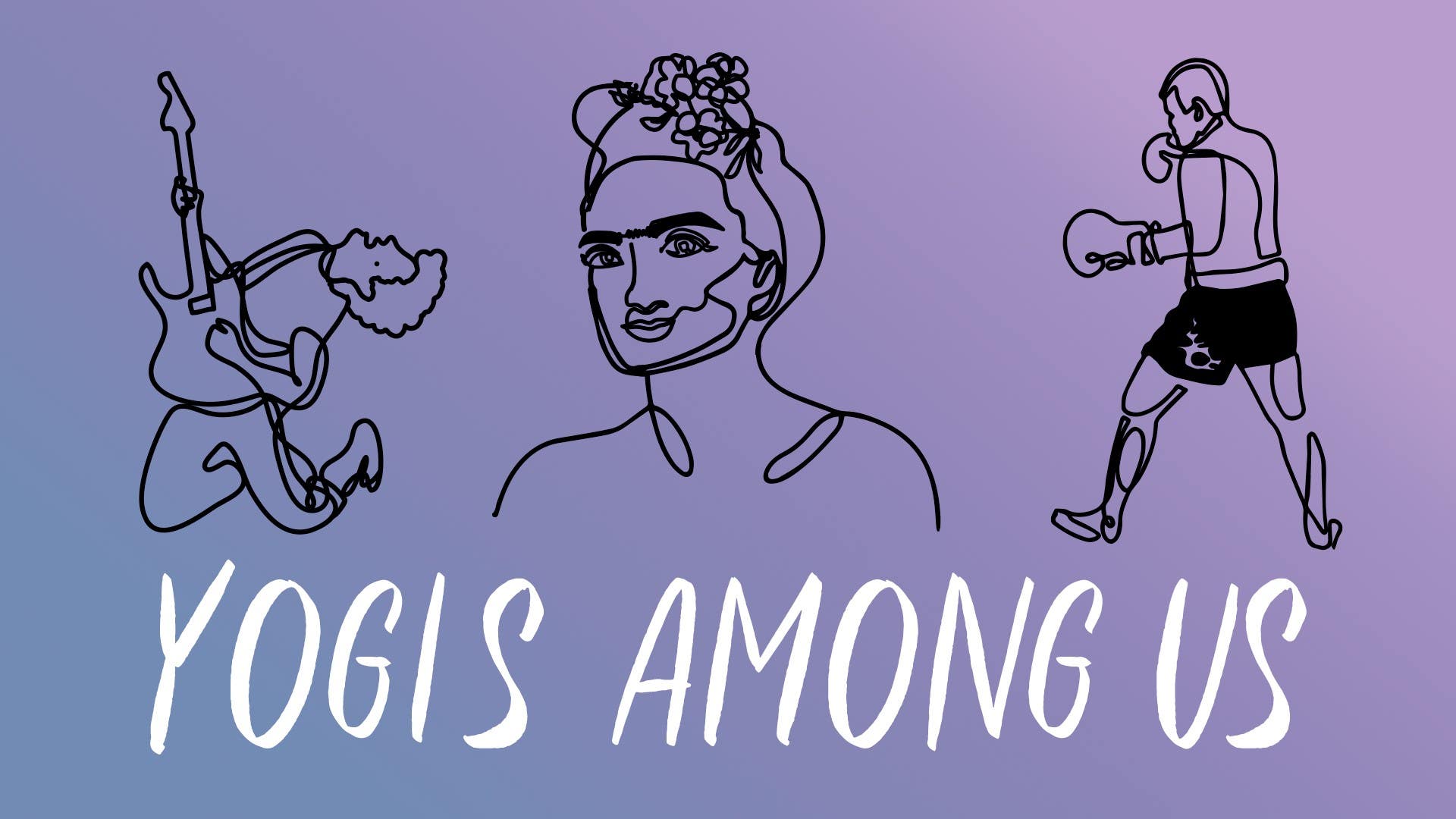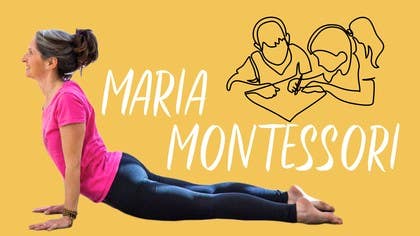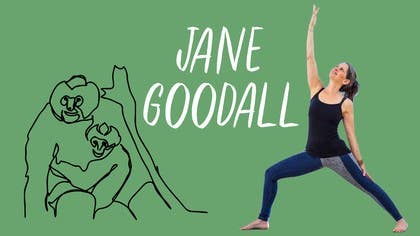Description
About This Video
Transcript
Read Full Transcript
Chapter 1
Talk
Many parents who have ever searched for a preschool for their child have heard of Maria Montessori. What they might not know is that she was burned in effigy by the Nazis. They took a likeness of her, put it on a pile of her books, and burned this pile in 1933. What they also might not know is that she was one of the first women who ever attended medical school in Italy, her home country. As a young child, she had great promise, she was super smart, she graduated from high school early, and she wanted to go to medical school.
And they wouldn't have her. Nevertheless, she persisted, and she was one of the first women admitted in Rome to the university in 1890, so she was 20 years old. And she was severely discriminated against while she was in med school. She was not even allowed to participate in the group dissection classes because they didn't feel it was proper for a woman to be in the same room as men in front of an unclothed cadaver. So she had to do her dissections all by herself in a separate room. It probably served her well in the end. She graduated star of her class. She took an interest in children with psychiatric disorders.
And while she was at the university's psychiatric hospital, she overheard one of the attendants making a derogatory statement about the children, and she said, look at those children picking up crumbs from the floor after they've already been fed. Well, Maria Montessori had the insight that maybe they're picking up crumbs because they have been put into this sterile environment where they have no sensory stimuli. They're not allowed to touch things, and they're hungry for this ability to be part of their world. And so she revolutionized the treatment of these children, and they showed incredible advancement and improvement as a result of her work. Turn of the century in Rome, there's a huge development boom. There are buildings being built everywhere.
And one of the development companies had this cluster of homes that they were building up into apartments and workplaces, and they were putting the whole family to work, men and women, fathers and mothers, and they had this problem of what to do with the children during the day. These were impoverished families in an impoverished community, finding opportunity to work, but there were no suitable schools, nothing to do with the kids. So they reached out to Dr. Montessori, then by then Dr. Montessori, and said, can you help us with these kids? And this was her first school, the Casa de Bambini, and she put them to work, and she gave them things to do with their hands, and they thrived. So fast forward another couple of decades, and there are Montessori schools all over Europe. So the rise of her educational approach was significant and important and very popular.
Unfortunately, the rise of fascism was also significant. And the Nazis were not at all interested in this sort of school environment where children were allowed to do their own thing. And so Hitler closed all of the schools in Germany. This is the burning and effigy incident. And in Italy, Maria Montessori herself refused to go along with Mussolini's plans to involve all of the schools across the country in the fascist youth programs. And so she herself closed the schools.
She and her son went to India in 1939, and they intended just to stay for a few weeks and lecture and educate while they were there on their educational programs. But World War II was raging, and as Italian citizens, they were not permitted to leave. Her son was put under in an internment camp, and Maria Montessori herself was under house arrest. So they spent the rest of the war in India. And she writes about that time as being an opportunity for contemplation and for planning for what she would do after the war.
She's quoted as saying, I did not invent a system of education. I just gave some little children a chance to live. And what she focused on in her method were a set of laid out, organized, and stipulated human tendencies. What's interesting from the yogic perspective is that these human tendencies align really well and really clearly with the set of teachings known as the niyamas. So in context, the niyamas and the yamas that precede them are part of the eight limbs of the yoga path found in the yoga sutras laid out step by step. There are five yamas, which are recommendations for how we engage in the world around us, how we manage our impulses.
And the niyamas are how we behave in ourselves, the inward turning controls of how to manage our own human tendencies, just like Maria Montessori recommended for her children. We have saucha, which is purity or cleanliness, having things in order. Montessori education prizes this sense of order, that humans thrive when they can have some control over the chaos of the world around them. The next of the five niyamas is santosha, which means in Sanskrit contentment. In the Montessori approach, the human tendency to repeat something over and over until it feels right, until there is a level of contentment and satisfaction with it. The next of the niyamas is tapas, which is discipline or austerity. Literally the word in Sanskrit means to burn away the impurities, to bring some heat to the task at hand until it's pure and real. And in the Montessori approach, children are allowed to bring some heat, some discipline and some intensity to whatever activity it is that they happen to be doing in the moment until it feels right for them.
The fourth of the five niyamas is svaadhyaya. I love this word because it's just fun to say, svaadhyaya. Sva means self. And dhyaya, you can add as many yayayas as you want to. It means to get close to, to sit next to, to hold the self in a knowing place, to know ourselves, to study ourselves and to become intimately aware of who we are. And in the Montessori approach, there is an emphasis on an orientation in space. So the children are encouraged to be aware of where they are physically in space, of who they are, where the self has been placed relative to what's around it. So that they become accustomed and comfortable with and keenly aware of their presence in any circumstance. The last of the niyamas is Ishivara pranidhana, which means a surrender to the divine, an understanding that we are so much more than what we can see and touch in our own bodies, that we are animated by and guided by and infused with this divine conscious presence.
And in the Montessori approach, there is an emphasis on the human tendency to be comfortable with abstraction, to, to be able to take something that's concrete and make meaning out of it, meaning that is larger than just its literal form. So I invite you to participate in a practice that, that examines all five of the niyamas. And we'll start this practice with ordering our space.
Chapter 2
Practice
So Sautja cleanliness order. Sometimes we come into the yoga studio in the morning, and the stack of props looks like this. And it just feels better to practice in a space that's clear. So check around you and notice if there's a little bit of disorder and just tidy it up and then notice if you have any sense of a quality that feels clearer, that feels nice. Then you can take one of your nicely neatly folded blankets or two and set them up for a comfortable seated hero pose.
Once again, check for neatness. It counts. Remember the princess and the P that little P under the pile of the mattresses. She could feel it. We are sensitive beings. So an external environment that's clear and orderly tends to support an internal environment that's clear and orderly. There is so much chaos in the world that if we can control the chaos that's physically in close proximity to us, then maybe we can get a little bit of clarity in the mind. And then Santosha contentment. So here it's a challenge. What's still chaotic in the mind? Is there an email that you forgot to answer? Go answer it. Is there a text you forgot to send? Go send it. Scratch all your itches. Be intentional about coming to a place of stillness and quiet and intention. Take a few breaths. And when that wave of contentment starts to rise, you can get ready to turn up some heat inside with a standing flowing practice.
So let's come up to stand and put your props neatly out of the way and come to the top of your mat. Bring your palms together at the heart. Inhale. Reach up nice and tall. Exhale. Fold forward. Inhale. Bend the knees a little bit. Slide the belly and heart forward. Look up. Exhale. Fold down. Inhale. Step a foot back. Bring the knee to the mat. Step the other foot back.
Exhale. Lower the belly and the chest to the ground. Inhale. Pull the floor toward you. Open the heart shoulders back for cobra. Exhale. Release back down. Tuck the toes. Push back to downward facing dog. Take a few breaths here. Lingering. And then look between the hands. Step the foot forward. Step the other foot forward. Inhale. Reach up. Exhale. Hands to the heart. And again. Inhale. Reach up. Exhale. Fold.
Inhale. Slide everything in the torso forward. Look up. Exhale. Fold back down. Step the other foot back. Bring the knee down. Step back. Exhale. Lower to the mat. Inhale. Open up the heart. Lift to cobra. Exhale. Down dog. Footsteps forward. Other footsteps forward. Inhale. Reach up. Exhale. Center. And again. Inhale. Reach up. Exhale. Fold. Inhale. Lengthen the spine forward. Exhale.
Release back into the fold. Step one foot back. You can bring up the heat a little further now and take plank pose. And exhale. Down. Inhale. Cobra. Or you can turn it into an upward facing dog. Exhale. Downward facing dog. Step a foot forward. Step a second foot forward. Inhale. Reach up. Exhale. Center. And once more. Inhale. Reach tall. Exhale. Fold down. Inhale. Lengthen. Look forward. Exhale. Fold. Step back. Exhale. Lower to the ground. Inhale. Up to the back bend. Exhale. Back to the forward bend.
Footsteps forward. Foot number two steps forward. Inhale. Reach. Exhale. Center. Inhale. Reach up. Exhale. Come to chair pose. Exhale. Fold down. Inhale. Lengthen. Look forward and exhale. Release. Step back. Exhale to the floor. Inhale. Upward facing. Exhale. Downward facing. Put the heel of one foot on the mat. Step the other foot forward. Reach up into a warrior pose. Exhale. Come right back down. Step back. Lower to the mat. Inhale. Exhale. Put the other heel down. Step the other foot forward.
Reach up warrior. Exhale. Step back. Continue. And look between the hands. Feet come forward. Inhale. Arms come up. Exhale. Hands to the heart. And repeat. Inhale. Exhale. Sink into the chair. Next exhale. Fold down. Lengthen. Inhale. Exhale. Step back. To the ground. To the back bend. To the dog bend. Bring one heel to the floor. Step the other foot forward. Reach up warrior. Exhale. Reach down. Step back.
Open up the heart. Upward facing. Exhale. Lift the hips. Downward facing. Step the other heel down and foot forward. Warrior on the second side. And release and continue. Maybe you feel some heat rising now. Some tapas. Some burning off of impurities. Some discipline. And step to the front of the mat. Inhale. Reach. Exhale. Last one. Inhale. Reach up. Chair pose. Fold down. Lengthen the spine. Deep breath. And fold on the exhale. Step back to plank. Lower to the mat. Inhale.
Upward facing. Exhale. Downward facing. One heel down. Other foot forward. Warrior. Release. Continue through the flow. Other heel down. Warrior. Last flow. Deep breaths. And step forward. Two feet to the front of the mat. Inhale. Reach. Exhale. Hands to the heart. Release the arms by your sides. Pause for a moment. And then come back down to a comfortable seat. And take your blankets back. I'll return to hero pose. You can return to any seat that makes sense for you.
So building up the fire. Turning the heat up inside. Allowing whatever impurities are willing to be burned away by that heat to be burned away. Coming back to sit. Close the eyes and observe. So now we are getting close to the self. We are conducting an observation of what's true and real in this present moment. Maybe you feel your heart beating a little faster than it normally does. Maybe you feel the muscles at ease after genuinely contracting and working and intentionally being strong in the moving practice. So we can conduct this inner inventory of sensation, of memory, of evaluation, whatever information we're seeking inside.
Discover if it's there to be known. Recognize it. Acknowledge. And then let it go. As we move into the prospect of Ishvara Pranidhana, the possibility to surrender to some larger wisdom and sit in the quiet of that wisdom. Take four more deep breaths in and out. And bring your hands gently together in front of your heart. Close your practice. May all beings be happy. May all beings be free from suffering. May all beings be at peace. Thank you for being here.
Yogis Among Us
Comments
You need to be a subscriber to post a comment.
Please Log In or Create an Account to start your free trial.









